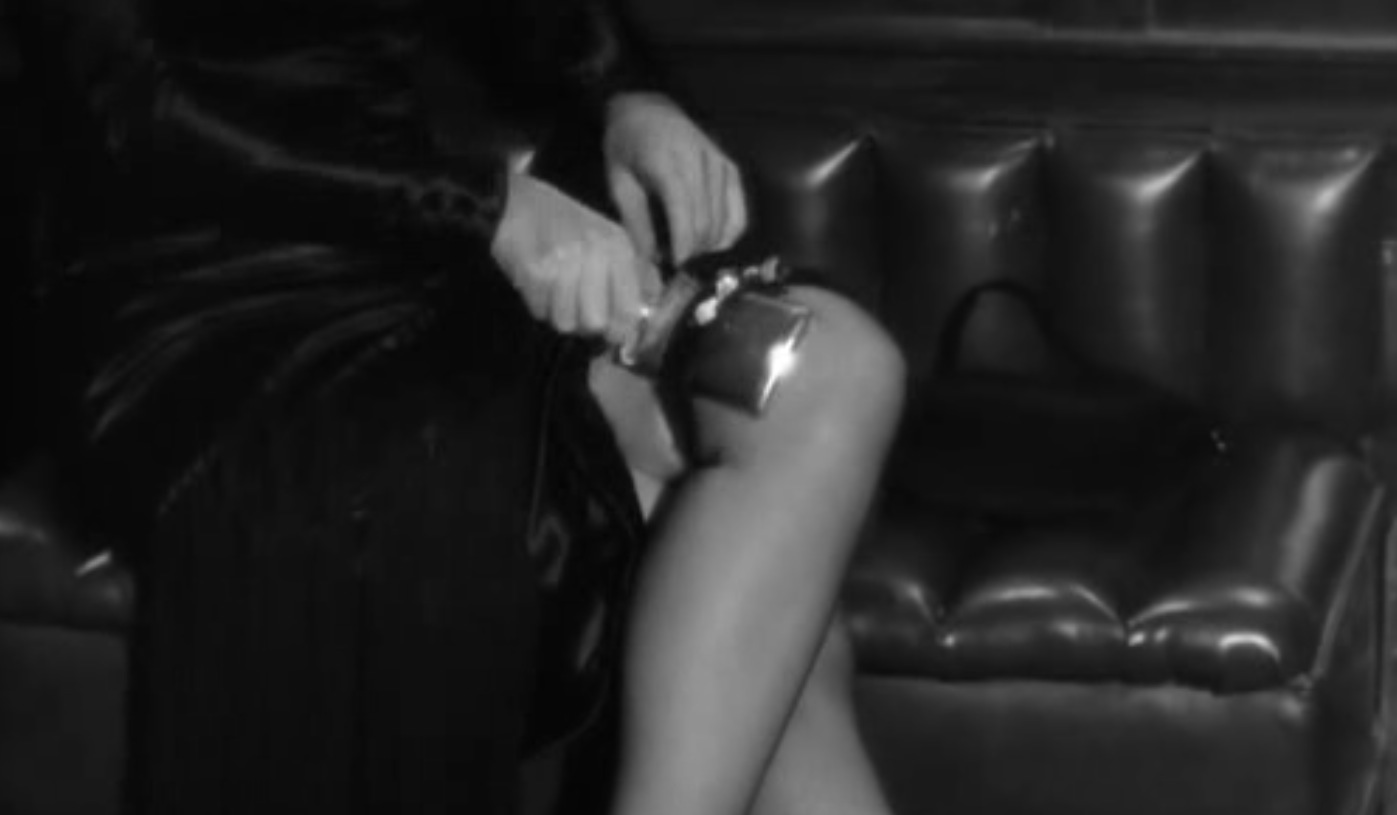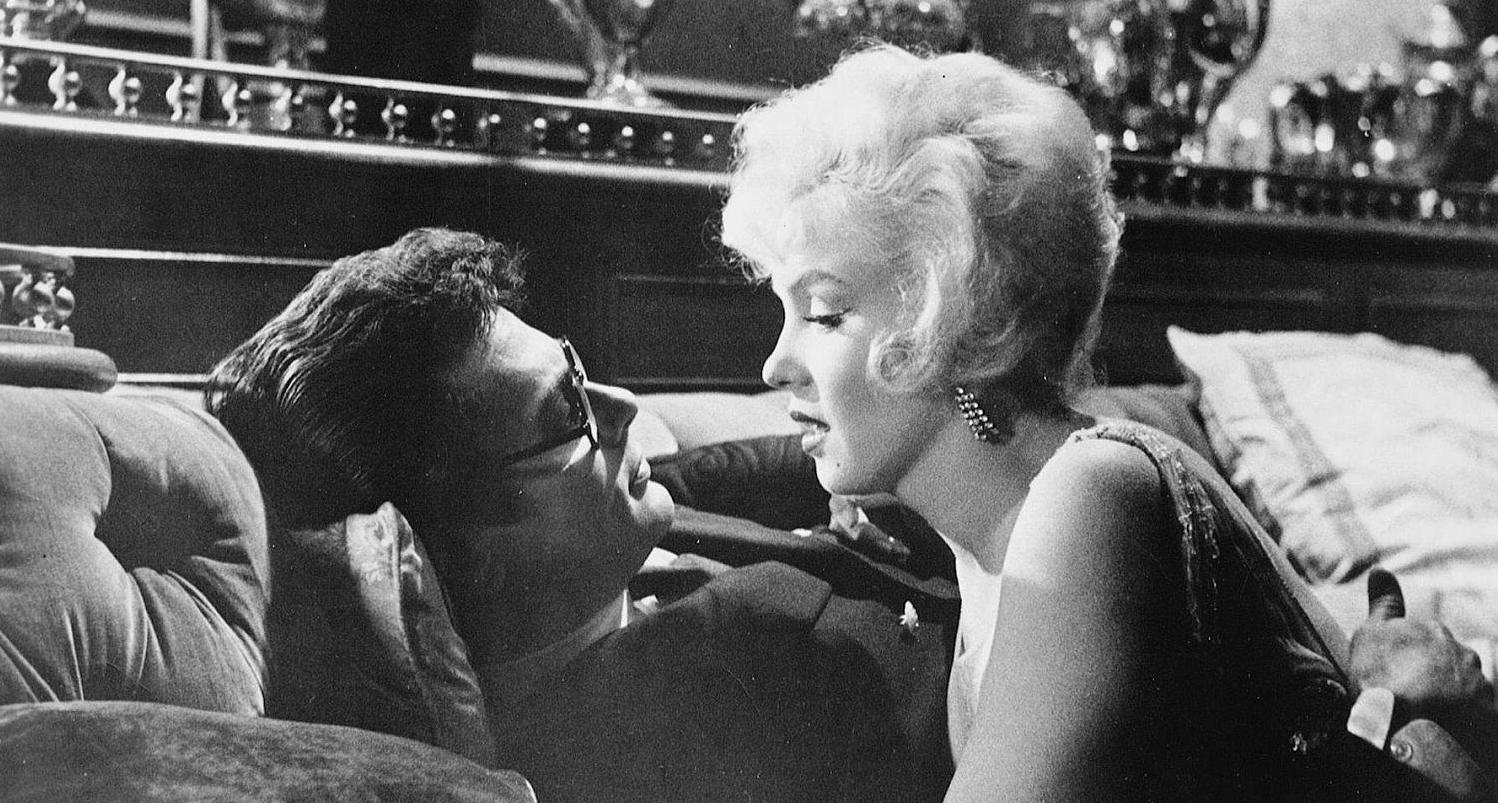In “Some Like it Hot,” how does Marilyn Monroe embody the “White Goddess” and “Dumb Blonde” tropes?
Quick Answer: Some Like it Hot uses the undeniable sexual power of Marilyn Monroe to stereotype her character as a sexy, brainless girl who uses her looks to get through life. She embodies two well-established tropes: the “dumb blonde” (a girl who is, as the name says, dumb and blonde) and the “white goddess” (an innocent and virginal yet sexually evocative woman). The film contrasts this icon of extreme femininity with two men dressed as ladies, creating both humorous and narrative effects. The result is a film that subverts expectations of gender roles and sexuality with clever reversals.
Marilyn Monroe was no stranger to the male gaze. From the first time most moviegoers saw her on-screen during her minor role in All About Eve (1950), she was a scene-stealer, bringing a sexual illumination to black-and-white film. Her career thrived through a combination of curiously unique acting abilities, an equally memorable singing voice and a raw physicality that made people show up in droves to watch her on the big screen. Even films that aren’t intentionally underlining her natural attributes (if any such pictures truly exist) can’t help but study her physicality through the simple consequence of her physique on camera. Some Like it Hot (1959) is no exception. It’s a film in which her character is assumed to be the embodiment of female perfection, as well as a comic foil to the two men dressed in drag (Jack Lemmon; Tony Curtis) who share her company onscreen.
The first time we see Marilyn in Some Like it Hot, she struts on screen as Jerry’s (Lemmon) jaw hits the floor. She’s photographed mostly from behind in the shot, from the perspective of Jerry and Joe (Curtis), and the two males are immediately smitten. Standing on a train platform, the train itself blows some steam just as Marilyn passes, no doubt for a little added innuendo in the provocative picture that helped shatter the grip of the Hays Code. This imagery contributes both to the “white goddess” and “dumb blonde” tropes. Sugar Cane, Monroe’s character, soon reveals herself to be a sexually innocent bombshell: the white goddess beaming with sexual radiance yet sexually inexperienced in actual terms. She identifies with the dumb blonde trope as well, advertizing her “dumbness” through dialogue, saying she’s not very smart. The dumb blonde trope is also reflected in Sugar’s penchant for falling for the wrong man (something she admits as a recurring trend in her life) and her tendency to be manipulated and convinced of falsities throughout picture. For all her charm and charisma, Sugar is right that she isn’t the brightest, and she isn’t very experienced. Her sexual innocence translates to extreme sexual impact, as her qualities render her the perfect physical manifestation of conventional male desire. The combination of the two tropes play out with an obtuse implication that brains aren’t as important as beauty. Fortunately for Sugar, she has copious amounts of the half that (supposedly) matters.

Marilyn Monroe’s legs in Some Like it Hot (1959)
What’s powerful about Some Like it Hot is that the film acknowledges these attitudes and assumptions surrounding female objectification. It goes on to subvert them through the male characters. When the two men first dress in drag, the first piece of anatomy observed through photography is their legs, just as we saw with Monroe. We watch as Jerry has an issue with the breasts not staying where they should in his disguise as Daphne. When they get to the hotel, the first gentleman they encounter slaps Daphne/Jerry on the bottom. The pair share a blunt conversation about sexism when Jerry complains that Osgood (Joe Brown) tried to feel him up in the elevator. “I’m not even pretty,” Jerry says. “They don’t care,” Joe responds, “Just as long as you wear skirts. It’s like waving a red flag in front of a bull.” We’re forced to start looking at these men the same way cameras typically look at women. But because they’re male protagonists who have yet to normalize male attentions, we also confront the absurd entitlement of the male gaze and (frequently) the unwanted male touch.
Meanwhile Sugar is identified by her age, sex appeal and gender. She’s never even identified by a given name; her title signifies that she is eye candy for men. Sugar’s dumbness and sexuality, and that sexy dumbness’ impact on all the men in her proximity, is apparent immediately. She gets on the train and lifts her skirt to retrieve a brandy flask from her garter. She checks her breasts in the mirror. She does these things because she believes she’s in the company of only women. Instead, Lemmon, Curtis, and those viewing the film are intruding upon her privacy and, consequently, her sexuality. This dropping of Sugar’s guard continues throughout the picture as she thinks the two are women, consistently setting herself up for observation. She tells Joe about her horrible boyfriends and her devotion to dating jerks (which was her motivation for joining the band). She goes on about her desire to marry a rich guy with glasses like it’s the pinnacle of life.
As a result, Joe takes on a second disguise: a male millionaire with a yacht and glasses. Naturally, Sugar is too dumb to realize the trick and immediately falls for him. He also convinces her that he is impotent, encouraging her to let down her defenses and succumb to his sexual needs. In doing so, Joe becomes a proxy for the viewer, preying on her vulnerability. This is the typical Monroe character: the objectified woman too dumb to handle relationships or think about things too deeply, yet desired by all, seemingly for those very reasons. She’s a character who confides about her inability to find a good man to the very man who’s pulling new tricks on her, right in front of her eyes.

Seduction on the yacht in Some Like it Hot (1959)
As unflattering as her characterization sounds, the dumb blonde trope is a slippery phenomenon that serves a wide range of purposes with as many underlying messages. TVTropes defines the dumb blonde as the “stereotypical assumption that blondes are dumb. Perhaps no more than a Foil to the Brainy Brunette, but can also appear as The Fool, The Ditz, or even the Brainless Beauty. Extreme cases can make her the Cloudcuckoolander. Her character is otherwise flexible; the Dumb Blonde ranges from a Love Freak, to a sweet, wholesome blonde whose lack of interest in education only shows she is more concerned about people, to a vacuous, mean-spirited and often lazy bimbo, to The Vamp. The Dumb Blonde may be less worldly-wise, or she may have decided to skate through life on her looks, leaving intellectual pursuits to her darker-haired counterpart because she does not want to spend the effort to cultivate her mind. It may be even a deliberately cultivated act, to appear in need of help before men. Whatever the reason, she tends to be scatter-brained and lacking in common sense.” This definition is accompanied by a picture of Marilyn Monroe as the ultimate example.
The white goddess is less of an official trope, but somewhat a variant of the “love goddess,” defined as “a deity of love (which, more often than not, includes sexual lust as well). Most likely a member of the setting’s ruling pantheon, but could be any character (including a mortal) who is regarded by other characters as a goddess of love. As a character, they’re likely to be an Ethical Slut, Good Bad Girl, Hot God, Sex God, or all of the above.” The “white” refers to a sexual innocence within this outward sexuality—and, in the case of Marilyn, a literal whiteness and purity.
With all this objectification, it would be easy to read Some Like it Hot as affirming stereotypes of female attractiveness and Monroe as a straightforward sexual icon for male conquest. However, Some Like it Hot ends with a homosexual understanding between Osgood and Jerry, subverting all the gender expectations of the time, while never losing the light touch of Billy Wilder’s comedy that colors the entire piece.
Despite what’s said on the surface, nothing about Monroe’s treatment or performance agrees with the idea that beauty is more important than brains or that dumb women need not worry so long as they have an ample chest. Instead, the film turns those male-oriented falsehhoods against the males who created them, pitting two guys dressed as ladies against one of entertainment’s most “perfect” women and yielding both laughs and lessons.

